Antioch (Antakya)
Q200441Antioch: capital of ancient Syria, modern Antakya in Turkey.
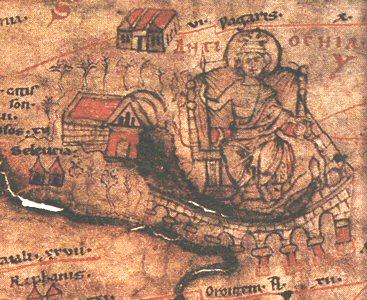
Antioch was probably founded in 307 BCE as Antigoneia by one of the successors of the Macedonian conqueror Alexander the Great, Antigonus Monophthalmus. The details are unclear, but we know of the existence of this earlier city, and we know it was more or less in the area of later Antioch, and it was logical for the city to be renamed once captured by Antigonus' arch-enemy, Seleucus I Nicator. This happened after the Battle of Ipsus (301). Almost immediately, the victor founded four cities in northwestern Syria:
- Seleucia, named after himself;
- Antioch, named after his father Antiochus;
- Apamea, named after his wife Apame I;
- and Laodicea, named after his mother.
This tetrapolis ("land of four cities") was to remain the core of the Seleucid Empire.
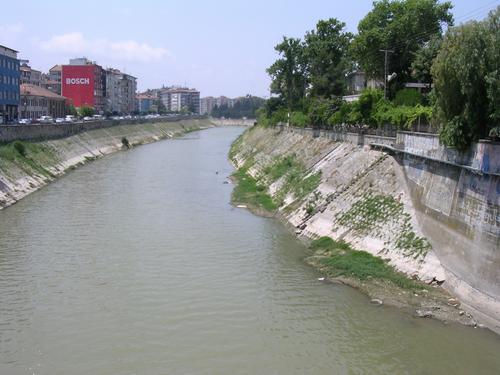
Four cities in a rather small area: this was only possible when the land was fertile, and when the cities could receive food from overseas. And indeed, Laodicea and Seleucia are ports, and Antioch and Apamea are situated on the banks of the river Orontes, which makes it possible to bring products upstream from Seleucia. Even better, the alluvial plains north of Antioch and near Apamea are extremely fertile. Another river, now called Afrin, connected Antioch with in the northeast. The agricultural settlements along this stream, now called "Dead Cities", produced all kinds of products for Antioch, Apamea and Seleucia. Finally, Antioch was situated along the land road from Seleucia to Beroea (modern Aleppo), Hierapolis, Harran in Mesopotamia, Iran, and beyond: the Silk road.
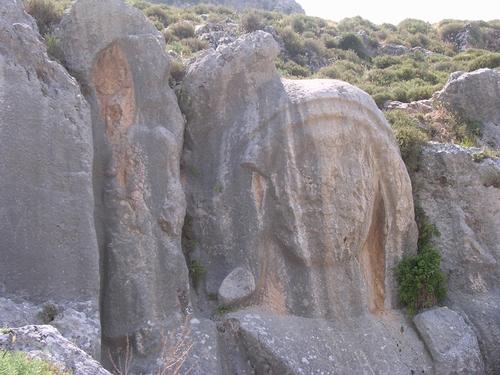
Like all Seleucid cities, the city was built along one straight, monumental main road, which must have been about 2½ kilometers long, leading from the southwest to the northeast. The other streets were laid out according to a standard gridiron pattern, and the course of the city walls was determined by the shape of the site. Northwest of the river Orontes, surrounded by water, was the citadel with the residence, although not situated on a hilltop - as was usual - but on an island.
No monuments from this age survive, but in the east, where the city is built on the slopes of a mountain range, one giant piece of rock sculpture remains. It is believed to be a portrait of Charon and also shows a smaller person, gazing over the city. It was probably cut during the reign of Antiochus IV Epiphanes (175-164), who may or may not be identified with the smaller figure.
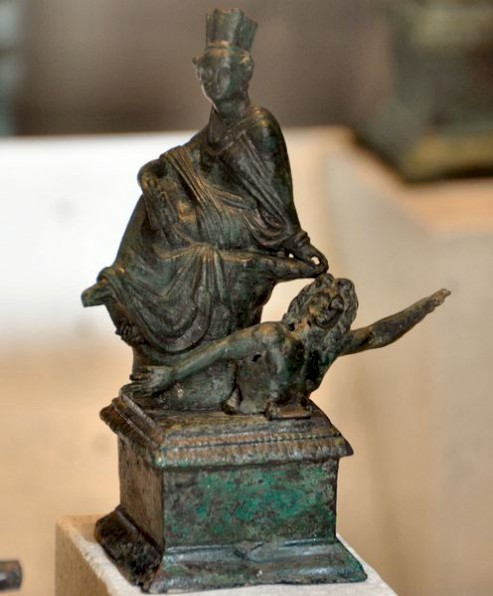
Another work of art from Seleucid Antioch is the famous Tyche, or "fortune", which was created by Eutychides of Sicyon, a pupil of Lysippus. The original statue is lost, but it is known from many ancient copies. The goddess is shown as a draped woman, seated on a rock, with a turreted crown that represents the city's fortification. This motive has no Greek antecedents, but is based on the art of ancient Assyria and Elam. The swimming figure at her feet represents the Orontes; in her hands, she holds several wheat stalks that symbolize the city's prosperity. (These are missing on some copies.) The statue, with its detailed symbolism, was to influence all later personifications of cities - in the Seleucid Empire, in the Roman world, in the Renaissance, and up till our own age.
Probably, Seleucus Nicator wanted to make Seleucia his capital, but his descendant Seleucus II Callinicus lost control of that city during the Laodicean War (a.k.a. Third Syrian War; 246-241), when the ;Ptolemaic king Ptolemy III Euergetes captured Seleucia and Antioch. The latter city was immediately recovered and the port was reconquered in 219 (during the Fourth Syrian War), but in the meantime, Antioch had become the real capital of the Seleucid Empire. The royal palace was still on the island in the Orontes.
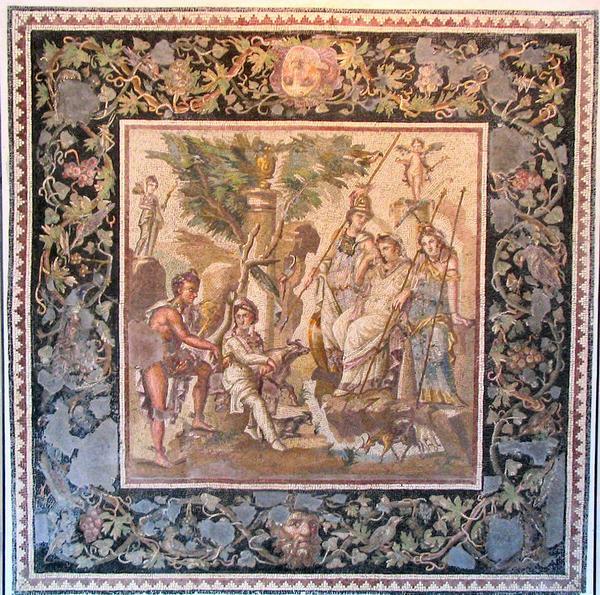
Being a capital was a mixed blessing. Of course the presence of a king meant that money was spent in the city, but it also meant that Antioch was an important aim during civil wars - and there were many of them, because after c.100 BCE, the succession within the House of Seleucus was contested. The city often changed hands; meanwhile, the kings could not defend their kingdom against the Parthians and Romans. It was a sign of the times that Antiochus IV dedicated a temple in Antioch to the Roman Jupiter. In 64 BCE, the Roman general Pompey the Great added the remains of the Seleucid Empire to the Imperium Romanum. From now on, the city was the capital of a province called Syria, and a senator resided in the palace of Antioch, as governor of this new part of the Roman world. The city was allowed to strike its own coins.
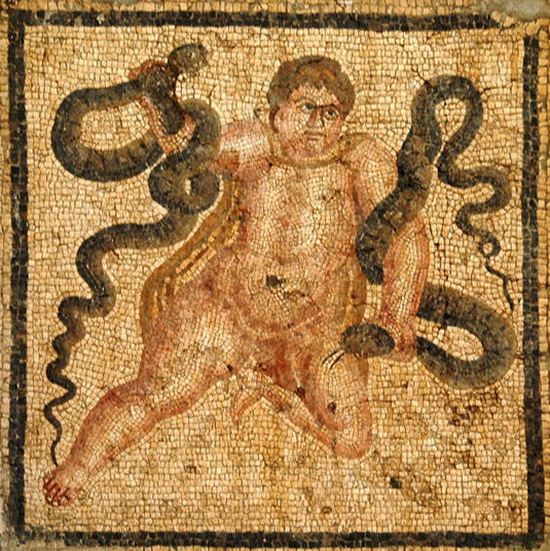
Antioch benefited from Roman rule. The Historia Augusta mentions a great fire in Antioch, implying that the emperor Antoninus Pius offered help to restore the city.note What strikes us now as something special, is the great number of splendid mosaics. (Many of them are now in the Archaeological Museum of Antakya, which is therefore also called the Mosaic Museum.) There must have been a school of mosaic makers, which was sufficiently famous to attract international attention. When Antioch was captured by the Sasanian king Shapur in 253 (or 260), he arrested the craftsmen and ordered them to make the decoration of his palace in Bishapur.
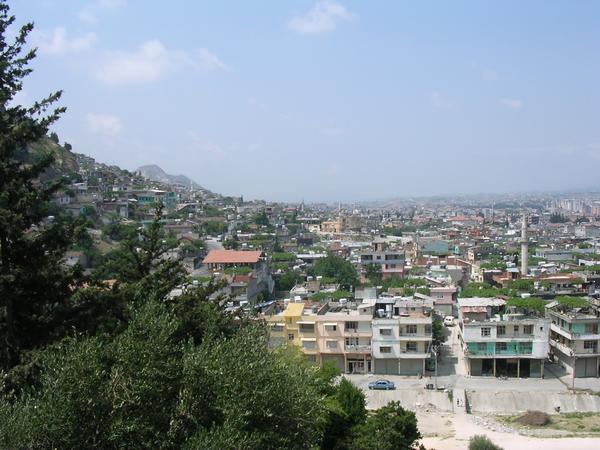
To defend the important city - first against the Parthians and later against the Sasanians - the Romans first moved the border to the Euphrates, and from there to the Tigris. Usually, the city flourished, and a splendid work of art like this sarcophagus is not rare. However, the city sometimes suffered: for example, when governor Pescennius Niger proclaimed himself emperor and lost the war against his rival Septimius Severus, who temporarily took away its independence, giving it to Laodicea.note Earthquakes are recorded during the reigns of Tiberius, Caligula, Hadrian, and Diocletian. Food riots took place when Julian visited the city.
Because there was a Jewish quarter in the southern part of Antioch, it comes as no surprise that Christianity arrived early in the city. In fact, the name "Christians" originates from Antioch.note The cave that is now shown to tourists as the place where Peter used to preach, was identified during the Crusades, and is probably not authentic.note But whatever the authenticity, the city was an important center of early Christianity. In 268, an important council took place in the city, which was later recognized as the seat of a patriarch. Constantine the Great founded the Domus Aurea ("golden house") in the city, a famous octagonal church. Important relics were brought to the city, like the body of Simeon the Stylite.
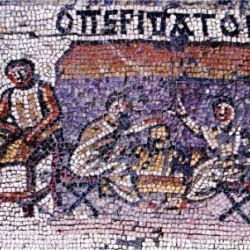 Antioch, Aristotelian philosophical institute |
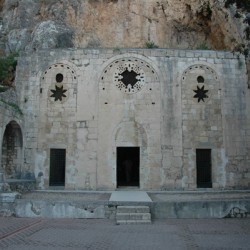 Antioch, Cave of Saint Peter (façade) |
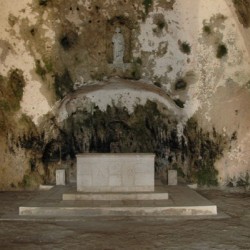 Antioch, Cave of Saint Peter (altar) |
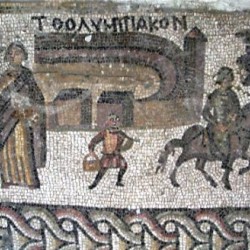 Antioch, Mosaic of the hippodrome |
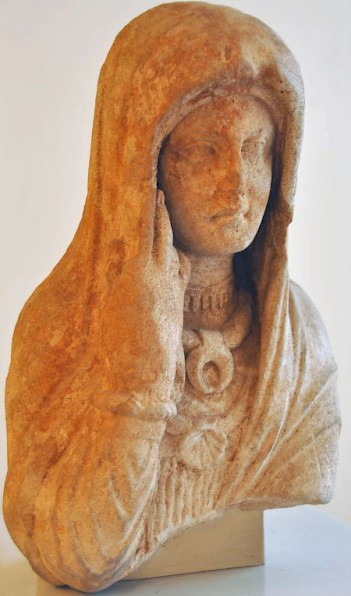
The Antiochene theologians, however, were condemned during the Council of Ephesus, because the followed the teachings of Nestorius, who had argued that in Christ man and God were only united at a spiritual level, whereas the Alexandrine and Roman theologians argued for a full physical unity.
In Late Antiquity, Antioch was still one of the most important cities in the Mediterranean, but the center was no longer at the island in the Orontes; the southern part of the town was becoming more important. After a great fire (525) and an earthquake that also destroyed nearby Seleucia (526), the emperor Justinian founded new churches (in 527) as new city center. The city was now renamed Theopolis, "City of God".
Unfortunately, this was not the beginning of the end of Antioch's misfortunes: in 540, the Sasanians captured the city, and although it was soon recaptured by the Byzantines, the new walls surrounded a smaller area than they once did.note Four earthquakes between 551 and 588 damaged what was left of the city, and just when its fortunes finally seemed to improve, it was occupied by the Sasanians again (611-628). The Byzantines managed to regain control, but the country had suffered heavily, and was an easy target for the Arab armies, who used the city as base against the Byzantine Empire.
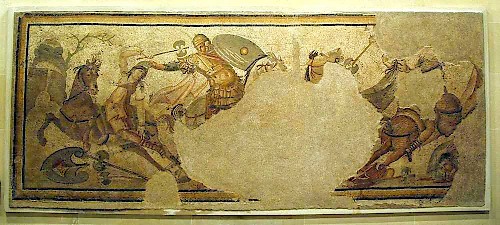
Today, Antakya is a modern city in Turkey. There are no ancient monuments left, but the city has a splendid museum, where you can see some of the most splendid mosaics from Antiquity. A visit can easily be combined with a trip to Seleucia, which is just twenty-five kilometer downstream along the Orontes, close to the sea.
According to Athenaeus, the city was famous for the quality of its cucumbers.note